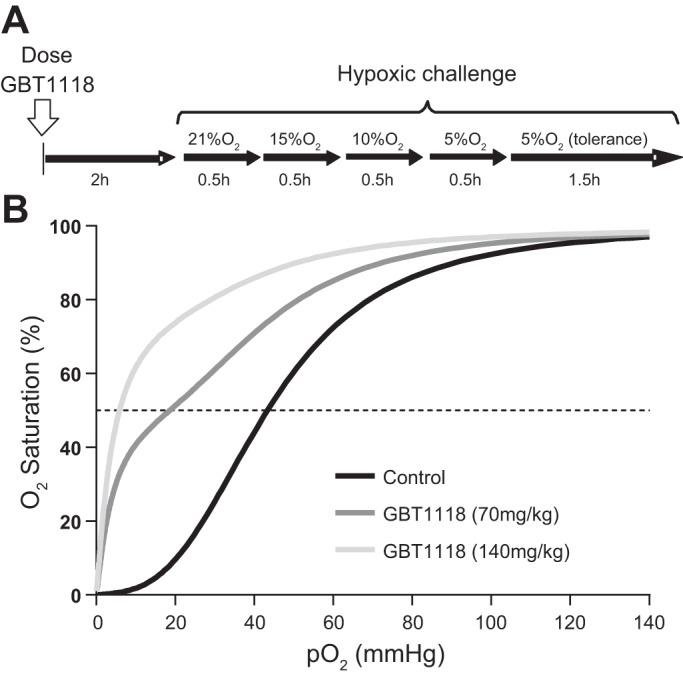Fig. 1.

A: hypoxic challenge design. Mice were dosed orally with GBT1118 (70 or 140 mg/kg) or vehicle only. At 1 h after GBT1118 or vehicle administration, mice were exposed to hypoxia by stepwise decreases in O2 concentration to 15%, 10%, and 5%. Animals were kept at each hypoxic level for 0.5 h. To assess tolerance to hypoxia, mice were kept at 5% O2 hypoxia for an additional 1.5 h. B: changes in O2 affinity after GBT1118 administration, shown as representative O2 equilibrium curves (OECs) of blood (40% hematocrit) from vehicle- and GBT1118-treated mice (n = 6 animals/group). GBT1118 at 70 or 140 mg/kg decreased the Po2 at which Hb is 50% saturated with O2 (P50) of blood from 43 ± 1.1 to 18.3 ± 0.9 and 7.7 ± 0.2 mmHg, respectively. A leftward shift in the OEC, representing a decrease in P50, indicates a GBT1118 dose-dependent increase in Hb O2 affinity relative to vehicle-only control.
